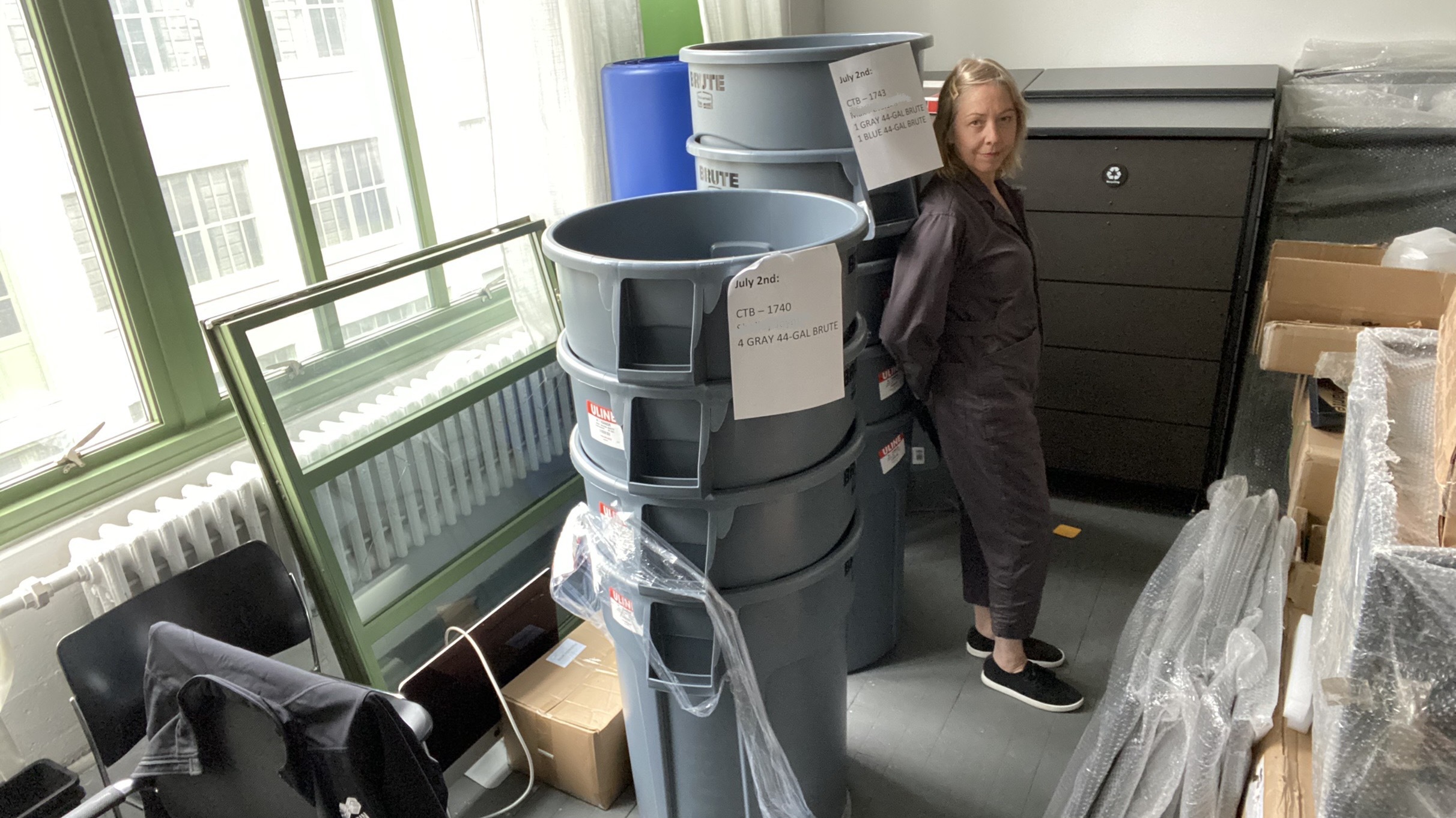Should I Stay DTC? Or Should I Try to Go Costco?

As I look to scale my business, I’ve become curious again about selling in Costco. But it does raise some questions: Should I knock off my own product with a lower-priced version? What exactly would I have to do to get into Costco? And how would this help or hurt my brand?
By Liz Reisch Picarazzi
I’m often asked if I plan to sell my company’s trash enclosures at Home Depot or Costco—and whether I plan to go on Shark Tank. My answer has always been no. Citibin enclosures are industrial grade with premium materials and features, while mainstream retail tends to be residential grade, high-volume, and lower price. That’s not the market I’m targeting — at least not currently.
In fact, my business exists because as a consumer I couldn’t find a trash enclosure that I liked in the mass market, so I created my own. It’s a niche product for a customer who is willing to pay for quality and design. It’s not the type of mass market product that does well on Shark Tank.
And yet, as I look to scale my business, I’ve become curious again about selling in Costco. It does carry premium products online that aren’t available in their warehouses. This potential move does raise some questions, such as: Should I knock off my own product with a lower-priced version before someone else does? What exactly would I have to do to get into Costco? And how would this help or hurt my brand?
So far, we have mostly sold direct-to-consumer, with some forays into Amazon and selling through showrooms. I have a small sales team that takes a consultative approach to solving our clients’ problems — whether those problems are overflowing trash, rats, or stolen packages. In New York City, we do on-site estimates and provide written proposals. Our enclosures are prefabricated and modular, so once a customer pays, we take the bins out of the warehouse and install them. If a client needs an existing enclosure removed, we break it down and dispose of it. If a client’s enclosure has been tagged, we can sometimes remove the graffiti, and if not, we replace the boards. In the mass market, we wouldn’t be able to work with clients in such a high-touch way.
Recognizing the opportunity to sell beyond New York City, we developed a prefabricated kit that can be shipped anywhere. This expanded our market to the whole country and has boosted online purchases from our own web site to 16 percent of sales with minimal investment in paid online advertising. I haven’t cracked the nut yet on effective pay-per-click or social media marketing, which has been a common theme on the 21 Hats podcast. AdWords, Facebook and Instagram paid ads have been a lot of work, money, and frustration for very little return.
We’ve also tried selling on Amazon. I was okay with the 15-percent referral fee because of the platform’s massive reach. But it came with a lot of strings attached: Use Amazon’s fulfillment vendors and delivery carriers. Do paid marketing to get visibility and not get buried. And adhere to stringent requirements to qualify for Amazon Prime and Amazon Choice badges. We tried to sell package delivery lockers on Amazon for a few months and didn’t make a single sale. I think that was largely because we hadn’t been credentialed yet as Amazon Prime, which most buyers expect. Even worse, the process of selling on Amazon made me feel disconnected from my customers and constrained as if Amazon were my boss. That’s not why I started my own business.
We’ve also tried selling through manufacturers’ representatives and design showrooms. But the economics are difficult to make work because of middle men and the expectation for expensive printed collateral (which I think no one reads), particularly with showrooms. I have no issue with middle men if they add value, but too often margin gets eaten up by their commission, causing manufacturers to raise prices without adding actual value to the consumer.
As we think about trying Costco and other big box retailers, I’ve decided to prototype a lower-cost version of our flagship trash enclosure. Part of the tradeoff is that it will require sacrificing some of the features that have made us successful, such as making our enclosures rat-proof. That’s a feature that is part of the Citibin brand, so much so that we proved its impregnability with an experiment that baited a trash enclosure with a pepperoni pizza to see if New York City rats could break in. They failed, as the nauseating surveillance video shows.
The low-cost prototype is on hold until I figure out what’s involved with getting into Costco. It could be a ton of work for limited profit, and it could cannibalize our existing sales. Or, it could be the way to scale nationwide. I’d love to hear from 21 Hats readers who have successfully broken into Costco or other Big Box stores. How did you pitch your product to them? What did it do to your margins? How are they to work with?
On the other hand, we recently landed contracts with Harvard University and New York City through direct selling. Which raises another question: Do I want more Harvards or Home Depots? That’s an easy one to answer.
Liz Reisch Picarazzi, CEO of Citibin, writes regularly about her entrepreneurial journey.